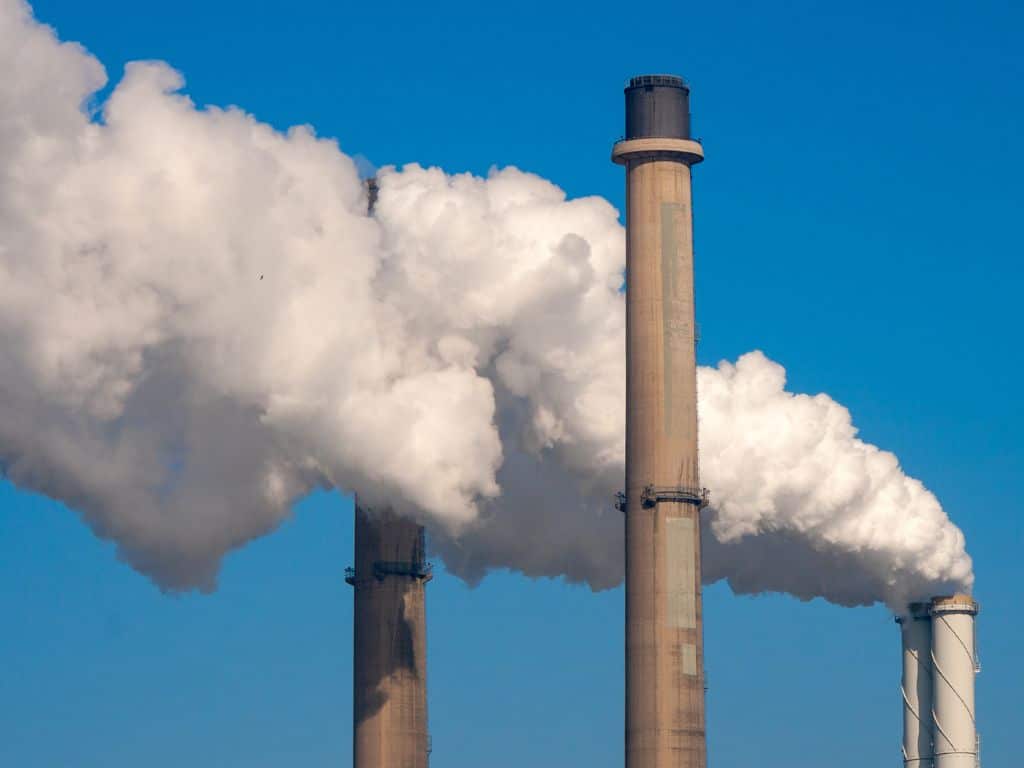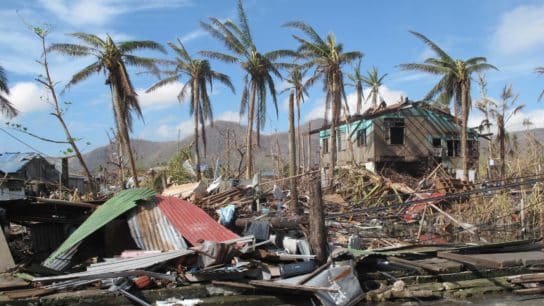Global carbon emissions from fossil fuels have reached a new record high in 2024, according to new research assessing the size and uncertainty of the remaining carbon budgets necessary to limit global warming below the critical threshold of 1.5C.
—
Humanity has only six years left for a chance to keep global warming below the 1.5C threshold, new research has revealed.
Global carbon emissions from fossil fuels have reached a record high in 2024, according to a new study by the Global Carbon Project science team. Published Wednesday, the latest edition of the yearly assessment projects fossil carbon dioxide (CO2) emissions to reach 37.4 billion tonnes this year, an 0.8% increase from 2023. Emissions from coal, oil and gas in 2024 are projected to rise by 0.2%, 0.9% and 2.4%, respectively, compared to last year.
The group of scientists said there was “no sign” of fossil CO2 peaking despite the urgent need to cut emissions to slow down climate change and a record growth in renewables.
CO2, a by-product of burning fossil fuels, biomass, land-use changes, and industrial processes such as cement production, is the principal anthropogenic greenhouse gas in the atmosphere, responsible for about three-quarters of planet-warming emissions. Global CO2 emissions from fossil fuels have increased by more than 60% since 1990 and atmospheric concentrations are now 52% higher than pre-industrial levels.

Fossil emissions are expected to decrease in the US (-0.6%) and European Union (-3.8%) and increase in China (+0.2%) and India (+4.6%), the world’s first and third largest CO2 emitters, respectively.
International aviation and shipping, which together account for 3% of the fossil emissions total globally, are driving the increase: they are projected to rise by 7.8% this year despite remaining below their pre-pandemic level by 3.5%.
Emissions from land-use change, including deforestation, are expected to rise as well this year after dropping 20% in the past decade. The study attributes the increase to El Niño, a weather pattern associated with the warming of sea surface temperatures in the central-east equatorial Pacific that returned last year, although it notes that the trend is likely to decline again in 2025.
Presenting the results at a press conference on Wednesday, Mike O’Sullivan from the University of Exeter, one of the scientists behind the study, said Brazil, Indonesia and Democratic Republic of the Congo accounted for more than half of global net land-use emissions. “A lot of deforestation and land use change is driven by demand for commodities in the Northern Hemisphere countries like Europe, US and China,” he explained.
Global fire CO2 emissions for 2024 have been above the average since the beginning of the satellite record in 2003, driven in large part by high fire activity in Canada and intense drought conditions in Brazil.
Offsetting the rise in emissions are land and oceans, the world’s two major carbon sinks. Despite being negatively impacted by climate change, the two systems combined continued to take up around half of the total CO2 emissions, according to the study.
Meanwhile, carbon dioxide removal technologies, excluding nature-based solutions like reforestation, only account for about one-millionth of fossil fuel emissions.
📢Global Carbon Budget 2024📢
— Glen Peters (@Peters_Glen) November 13, 2024
Despite some predicting a peak in global fossil CO2 emissions, we estimate growth of 0.8% [-0.3% to 1.9%] in 2024. Maybe a peak next year?
Is it all bad news, or can we find some good news?
1/ pic.twitter.com/Tb7qWfQ60Z
The data analyzed helped assessed the size of the remaining global carbon budget, the net amount of carbon dioxide we have left to emit before we exceed our desired global temperature increases – in this case, 1.5C above pre-industrial levels.
The critical threshold was established at the 2015 COP21 climate summit, when 196 parties signed the legally binding Paris Agreement. They agreed to keep limiting global warming to below 1.5C or “well below 2C” above pre-industrial levels by the end of the century. Beyond this limit, experts warn that critical tipping points will be breached, leading to devastating and potentially irreversible consequences for several vital Earth systems that sustain a hospitable planet.
“At the current rate of emissions, the Global Carbon Budget team estimates a 50% chance global warming will exceed 1.5°C consistently in about six years,” the report, compiled by an international team of more than 120 scientists, read.
The study coincides with the year’s most important international climate summit, COP29, which kicked off on Monday in Baku, Azerbaijan. Negotiations are expected to build on last year’s agreement to “transition away” from fossil fuels, though the Baku summit is putting particular emphasis on ramping up much needed climate finance for developing countries.
“Time is running out to meet the Paris Agreement goals – and world leaders meeting at COP29 must bring about rapid and deep cuts to fossil fuel emissions to give us a chance of staying well below 2°C warming above pre-industrial levels,” said Professor Pierre Friedlingstein of Exeter’s Global Systems Institute, who led the study.
“Progress in all countries needs to accelerate fast enough to put global emissions on a downward trajectory towards net zero. Until we reach net zero CO2 emissions globally, world temperatures will continue to rise and cause increasingly severe impacts,” Friedlingstein added.
You might also like: Navigating COP: A Deep Dive into the UN Climate Conference Process
—
This story is funded by readers like you
Our non-profit newsroom provides climate coverage free of charge and advertising. Your one-off or monthly donations play a crucial role in supporting our operations, expanding our reach, and maintaining our editorial independence.
About EO | Mission Statement | Impact & Reach | Write for us














